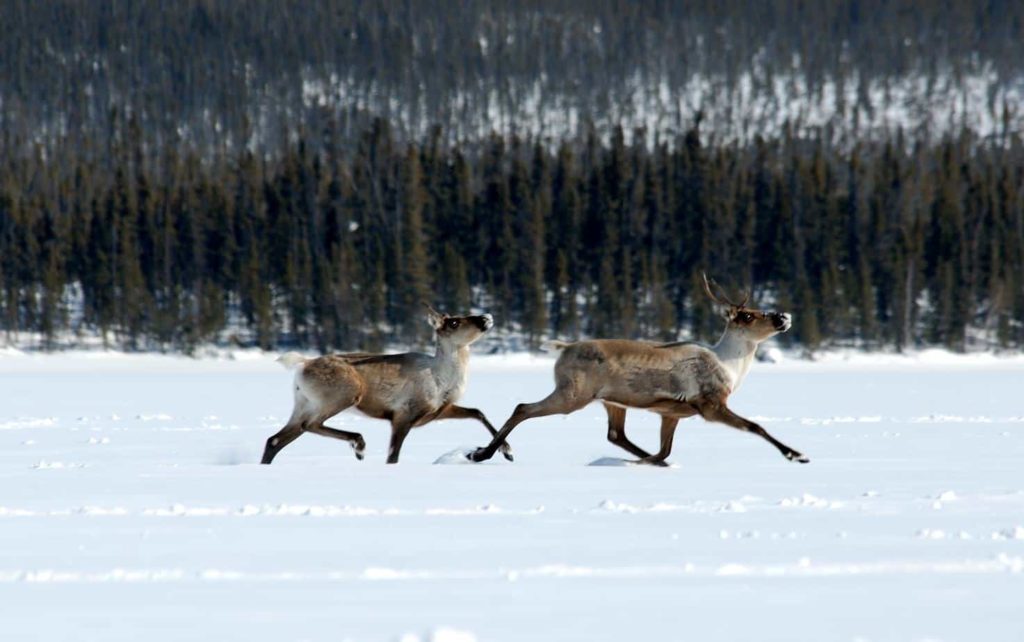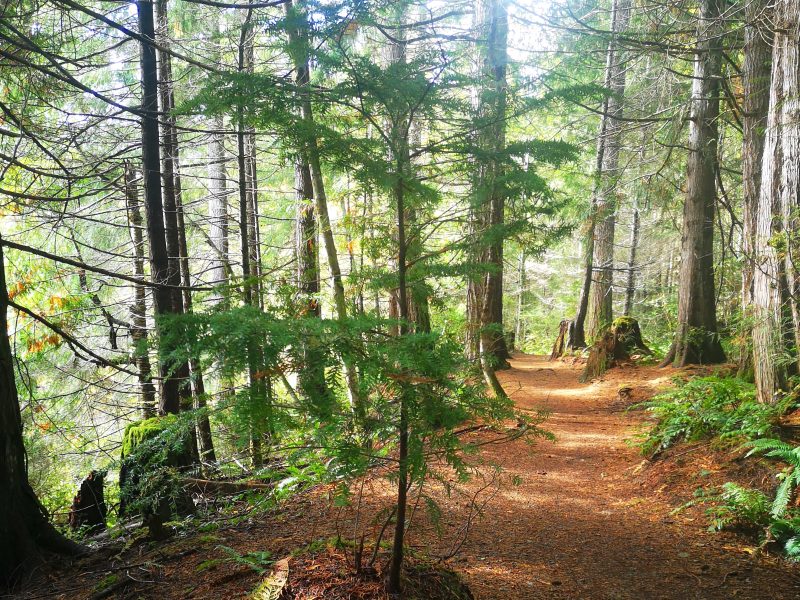
I’m currently wrapping up an adventure in the High North, (Tsiigehtchic, Northwest Territories, to be precise) where I’m learning from the Gwich’in Nation as they assert their governance over their land and even more importantly – caribou. The Gwich’in have been travelling alongside porcupine caribou for thousands of years in their annual 1,000 km journey from Canada to Alaska where they birth their young.

For the Gwich’in, caribou are more than just an antlered mammal. They’re a source of food, clothing and cultural identity. But I wanted to know: what will happen to caribou as dramatically hotter, drier and longer summers continue to burn the boreal at unprecedented rates?
Of course, I’m not the first to ask! After surviving the record-breaking 2014 “summer of smoke” that burned more than 3.4 million hectares in the Northwest Territories (N.W.T), communities like the Tłı̨chǫ Dene Nation south of the Gwich’in wanted to know: Will the forest grow back to how it used to be? When and where will the Tǫdzı, or boreal caribou, return?
I spoke with Canada Research Chair in Forest and Global Change at Wilfrid Laurier University, Jennifer Baltzer, who’s one of the scientists tasked with answering this question. Here’s what I found out:
- The damage caused by the 2014 fire season in N.W.T. was massive. It virtually blew the 25-year average out of the water. The area burned that season alone amounts to more than one per cent of Canada’s roughly 270 million hectares of boreal forest. That’s about the size of Taiwan.
- For the Caribou, fire can mean less food. Caribou depend on colourful organisms like lichen to survive and fuel the famous mass migrations through the boreal forests of the North. Lichen are a type of fungus or bacteria intermixed with algae that grow on trees and even beneath snow. They’re also flammable and sensitive to heat.
- Life in forests after a major fire isn’t always the same. Fires that burn really long and hot can remove the surface soil, altering the place where seedlings germinate and encouraging new kinds of life to replace what used to be there. Scientists are trying to figure out what this regrowth looks like so we can predict and prepare for the wider ecological changes, like when and where caribou return.
- Traditional knowledge shows that caribou avoid areas that have burned. Scientific models of their movement patterns agree it takes about 40 years for caribou to return.
It’s not all bad news for caribou. In Alaska, research shows that major fires are favouring the return of shrubs and trees over trees that support lichen which caribou love so much. That means a critical food source could be threatened with more megafires like Alaska’s unprecedented summer of 2004. But in N.W.T., early results from Baltzer and her colleagues’ research show that since the moss layer is more dense, the fires of 2014 weren’t burning as deep, and the trees that are returning are species that support the growth of lichen. That’s good news for caribou’s cherished food source, and the Indigenous communities that depend on them.
See for yourself
Caribou depend, in part, on lichen to survive. This video shows that “despite looking totally dehydrated and often dead, lichens quickly assimilate water in the form of rain or fog.”
Have your say.
What else do you want to know about wildfires? What should the next Fire Break be about? Drop me a note by email or on my environment channel, found here. Facebook and Twitter work, too.
Support us
The Fire Break is not the only cool thing that happens at The Discourse. Our sustainability reporter Alia uncovered the greenwashed truth about compostable plastics. I’m also working with APTN National News and HuffPost Canada to track Indigenous consultation on the proposed expansion of the Trans Mountain pipeline.
We are an independent media company and we’re looking for supporters. Join The Discourse by signing up here. [end]



